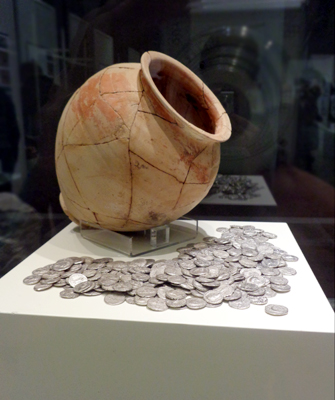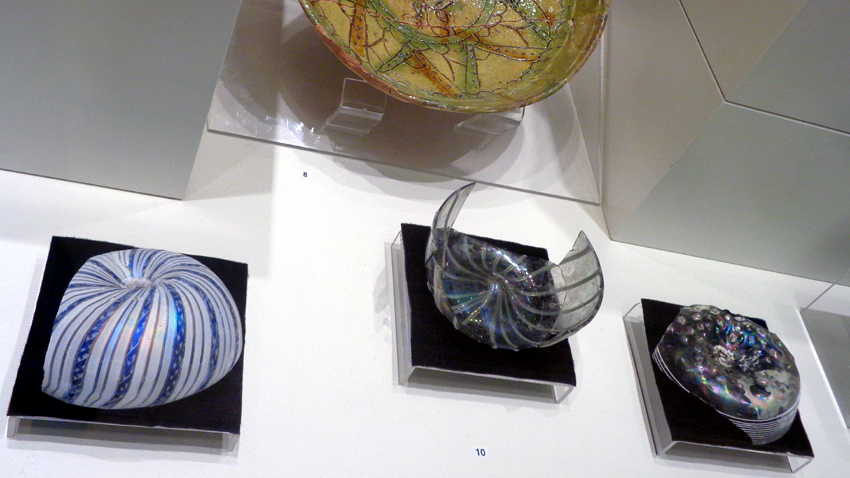On 11 February, the exhibition Bulgarian Archeology 2015 opens at the National Archaeological Institute cum Museum (NAIM), part of the Bulgarian Academy of Sciences in Sofia. It is held for the ninth time and features the most interesting finds discovered in the previous year. In 2015 Bulgarian archeologists carried out 401 field research projects. „We have a lot of work to do and we work effectively”, contends Associate Prof. Dr Ludmil Vagalinsky, NAIM Director. We have findings displayed in 24 showcases and about 50 are displayed on posters”. The number 401 includes not only archeological excavations but also field observations, i.e. localization of sites. In the meantime, excavation projects in the territory of Bulgaria are 300. Fifteen museums have supported the exhibition providing 2015 finds for it.
Next, we tell you more about the excavations in St. Nedelya Sq. in Sofia led by Assistant Prof. Dr. Veselka Katsarova:
 „In principle, the site has been generous in terms of finds, some of them unexpected for us. Overall, work in the city of Sofia is predictable because archeological excavations here have been going on for 100 years. One could hardly come across a striking find in any of ancient Serdica’s sites. In this particular case though it is important that excavations in 2015 refuted a popular hypothesis that the city square of ancient Serdica lied under St. Nedelya Sq. With the very start of archeological digs we came across two buildings and a street that automatically eliminate the possibility of the square’s location here. What followed was a find unexpected for the whole team. Under the floor level of one of the buildings we found an earthen pot full of three thousand silver coins from the Roman era collected for more than 200 years. The earliest coin is from the reign of Emperor Nero, i.e. mid-1st c. AD. The most recent ones are dated to the twenties of the 3rd c. During the reign of Emperor Alexander Severus emissions of 14 emperors and 9 empresses were collected. This is the biggest find of its kind found during archeological excavations in Sofia.”
„In principle, the site has been generous in terms of finds, some of them unexpected for us. Overall, work in the city of Sofia is predictable because archeological excavations here have been going on for 100 years. One could hardly come across a striking find in any of ancient Serdica’s sites. In this particular case though it is important that excavations in 2015 refuted a popular hypothesis that the city square of ancient Serdica lied under St. Nedelya Sq. With the very start of archeological digs we came across two buildings and a street that automatically eliminate the possibility of the square’s location here. What followed was a find unexpected for the whole team. Under the floor level of one of the buildings we found an earthen pot full of three thousand silver coins from the Roman era collected for more than 200 years. The earliest coin is from the reign of Emperor Nero, i.e. mid-1st c. AD. The most recent ones are dated to the twenties of the 3rd c. During the reign of Emperor Alexander Severus emissions of 14 emperors and 9 empresses were collected. This is the biggest find of its kind found during archeological excavations in Sofia.”
Close to the coin treasure the display features sophisticated utensils some of them damaged by time.
 „The utensils in the showcase together with the treasure are quite different in timing. They come from the 15-17 c. when buildings from antiquity were almost fully destroyed. And in fact Sofia had already emerged – this was the period before the liberation of Bulgaria from Turkish domination. These are finds from trash pits, and for this fact they are not in a good condition. The ones displayed here are the best preserved ones. They are precious for showing a very high level of material culture of the city’s medieval residents. The finds include expensive earthenware, especially the ones decorated with tulips – a very distinct design in Ottoman ceramic art intended for the Sultan’s table. We also found glass bowls most probably imported from West Europe. They are telltale of the decent incomes of Sofia residents at that time.”
„The utensils in the showcase together with the treasure are quite different in timing. They come from the 15-17 c. when buildings from antiquity were almost fully destroyed. And in fact Sofia had already emerged – this was the period before the liberation of Bulgaria from Turkish domination. These are finds from trash pits, and for this fact they are not in a good condition. The ones displayed here are the best preserved ones. They are precious for showing a very high level of material culture of the city’s medieval residents. The finds include expensive earthenware, especially the ones decorated with tulips – a very distinct design in Ottoman ceramic art intended for the Sultan’s table. We also found glass bowls most probably imported from West Europe. They are telltale of the decent incomes of Sofia residents at that time.”
For the time being, archeologists have only studied a small section of St. Nedelya Sq. Excavations are financed by the Culture Program of Sofia Municipality. They continue in 2016. Research precedes the reconstruction and redesign of this part of the city center. “In the coming years the square will most probably undergo a facelift”, Veselka Katsarova concludes.

English Daniela Konstantinova
Photos: Veneta PavlovaThe exhibition "Codes of Identity", which opens today in Sofia, presents ancient Bulgarian lineages that have left a lasting legacy. The venue is the National Archaeological Institute with Museum at the Bulgarian Academy of Sciences (NAIM-BAS) In..
June 11, 2007 - US President George W. Bush Jr. visits Sofia. According to protocol, the press conference he held for the media took place among the exhibits of the National Archaeological Museum. The official lunch for the guest was later held at the..
On November 10, 1989, a plenum of the Central Committee of the Bulgarian Communist Party ousted its General Secretary and Chairman of the State Council, Todor Zhivkov. This marked the symbolic beginning of the transition from a one-party system to..
On November 30, the Bulgarian Orthodox Church honors the memory of St. Apostle Andrew . In Bulgaria the saint is known as Saint Andrey and the folk..

+359 2 9336 661
